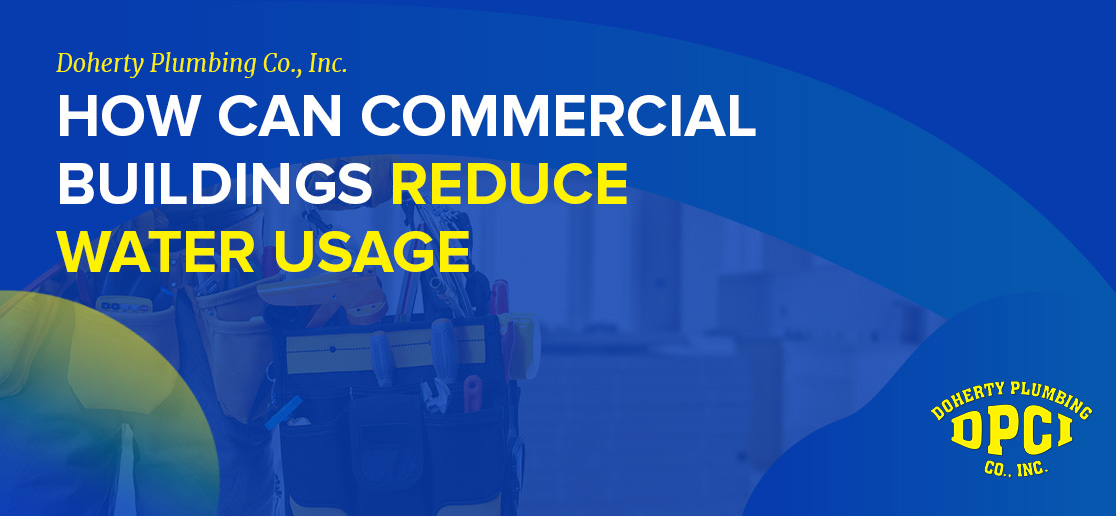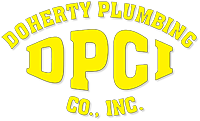
How Can Commercial Buildings Reduce Water Usage?
Commercial buildings consume a great deal of water, especially if you’re talking about a facility that is generating a great deal of power, producing a lot of products or hosting a lot of workers. There are a number of ways that you can reduce this consumption to save money, in addition to reaping the benefits of various tax breaks and incentive programs.
Upgrading to Low-Flow Fixtures
It may be worth your time to assess the different fixtures that you have installed in your building. Now may be the perfect time to invest in low-flow fixtures that will actually save you money in the long run. This includes toilets, faucets and shower heads (if there are any). This may be able to help you apply for LEED certification, which is a green building rating system.
Regulating Water Pressure

Water pressure in your commercial building should be somewhere around 65 to 80 psi. If you find that your pressure is higher than that anywhere in the building, you could be consuming too much water or even damaging your pipes. Water booster pumps are often used in commercial settings for things like water towers and supply tanks. Other areas of the building would benefit from pressure-reducing valves.
Insulating Your Pipes
Residential buildings typically have requirements when it comes to insulating the pipes running through the structure. A lot of older commercial buildings lack insulation around the pipes, and there are no requirements that are in place. This can result in a large loss of heat. This results in higher water usage because people will waste water waiting for the hot water to start coming through the pipes. Insulation doesn’t cost a ton of money, but the investment can save a lot of money over time.
Dealing with Leaks

It’s common for leaks to go unnoticed in a commercial building. With so many moving parts within this structure, a small leak could be unnoticed for years. A lot of the pipes in a commercial building are completely hidden in walls or ceilings. Over time, these leaks can add up to an increase in water consumption. You may even have a few leaky faucets or toilets throughout the facility. They all add up. All it takes is a little bit of routine maintenance and regular repairs to cut down on these occurrences.
If you’re overwhelmed with how to spot these leaks, there are ways that you can tell if something might not be quite right. You can use smart technology to monitor your water consumption. You can also take a look at your water usage through the meters in the building. Leak detection systems will go off if there is standing water nearby that should be addressed.
Updating Your Irrigation System
There’s no sense in running your irrigation system outside if it’s raining. There are rain sensors that can be installed that would prevent sprinklers from turning on. When the rain stops, the sensors would know to re-engage the irrigation system. The schedule would continue to run like normal.
Educate Your Employees
Even with the most efficient water setup, your commercial water consumption really depends on the people who are using the water. If you have a number of employees that are letting water run for inappropriate amounts of time, this will add up each day. You should educate your employees on the different ways that everyone can work together to be more efficient and mindful of the water that’s being used on a day-to-day basis.
Consider Smart Technology for Water Monitoring
There are a lot of smart devices available right now that allow you to monitor your water consumption. If you install one of these devices on your main meter or intake, you can monitor for abnormal consumption or overall consumption.
The Use of Grey Water
If you’ve never heard of it before, grey water refers to ‘clean’ water that comes from things like sinks, showers, laundry equipment, etc. This water is relatively clean, so it can be used for other areas of your building. It’s non-toxic and doesn’t contain any kind of disease, so it makes perfect sense to use it for things like flushing toilets, doing laundry and watering plants. You’d be surprised how much grey water can be utilized. There are even water parks that use grey water to fill up their slides and pools. There is a bit of an upfront cost trying to get your location fitted for grey water accumulation and storage, but the investment might be necessary if you feel it would result in a large water savings overall.
Utilizing Rainwater

If you really want to make some changes to your commercial setup that benefits the environment while saving you money, think about collecting and storing rainwater. You can use this water for things like washing equipment and vehicles, flushing toilets and in any decorative water features you have on-site, such as a fountain. Your ability to use a system like this really depends on where you are located. There are plenty of areas in the U.S. that have very dry seasons that wouldn’t result in a lot of rainwater collection. Once you’ve determined how much rainwater is actually available, you can calculate the benefits.
A commercial plumbing Chantilly professional can help you with any issues that you’re having with your water usage. They can help you figure out if you are experiencing a water loss, if there are leaks on site, and what can be done to prevent issues in the future. You can work with a professional to determine what steps can be taken to reduce the amount of water that your site is consuming on a regular basis. A little investment goes a long way.
